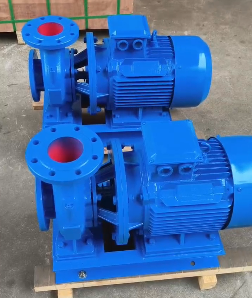Self-priming pump pipeline leakage inspection method
The following are the main methods for checking and repairing leaks in self-priming pump pipelines. These methods are designed to help users quickly locate and solve leaks:
1. Leakage inspection methods
Duck feather method:
Operation steps: When the water pump is running, use a duck feather to get close to the suspected air inlet and observe the fluttering of the duck feather. If the duck feather is sucked, it means that there is a leak at that location. Similarly, you can also use a lit cigarette to operate in this way, and use the fluttering direction of the smoke to assist in finding the leak point.
Advantages: Simple and easy, suitable for preliminary inspection.
Engine oil method:
Operation steps: For air inlet points that are difficult to find, a small amount of engine oil can be applied to the approximate air inlet position. The place where the engine oil is quickly sucked away is the air inlet.
Advantages: It can accurately find the leak point that is difficult to detect.

2. Leakage inspection steps
Determine the leak location:
Use the above-mentioned duck feather method or engine oil method to determine the leak location.
Repair the leak point:
According to the different leak locations, take corresponding repair measures. For example, if there is a leak at the pipe connection, you can re-tighten the connector or replace the gasket; if the pipe itself is damaged, welding or replacement of the pipe section is required.
Check other possible leaks:
After repairing the leak, check the entire self-priming pump system again to ensure that there are no other leaks. In particular, pay attention to the stuffing box, flange connection and other leak-prone parts.
3. Preventive measures
Reasonable installation of the self-priming pump:
The installation position of the self-priming pump should be as close to the water surface as possible to ensure that no air is sucked in when the water level drops.
When installing the water suction pipeline, the water inlet cross pipe should be slightly tilted downward in the direction of the incoming water or installed horizontally. No point of the water inlet pipe should be higher than the water inlet of the water pump, otherwise the air in the pipe cannot be completely removed.
Regular inspection and maintenance:
Regularly check whether the various components of the self-priming pump are intact, especially the seals and connectors.
Clean the water seal pipe at the stuffing box regularly to prevent blockage and heat from causing leakage.
Pay attention to exhaust:
Before starting the self-priming pump, add enough water to remove the air in the self-priming pump.
Normally, you should open the bleed screw on the pump cover regularly to remove the air accumulated inside.




